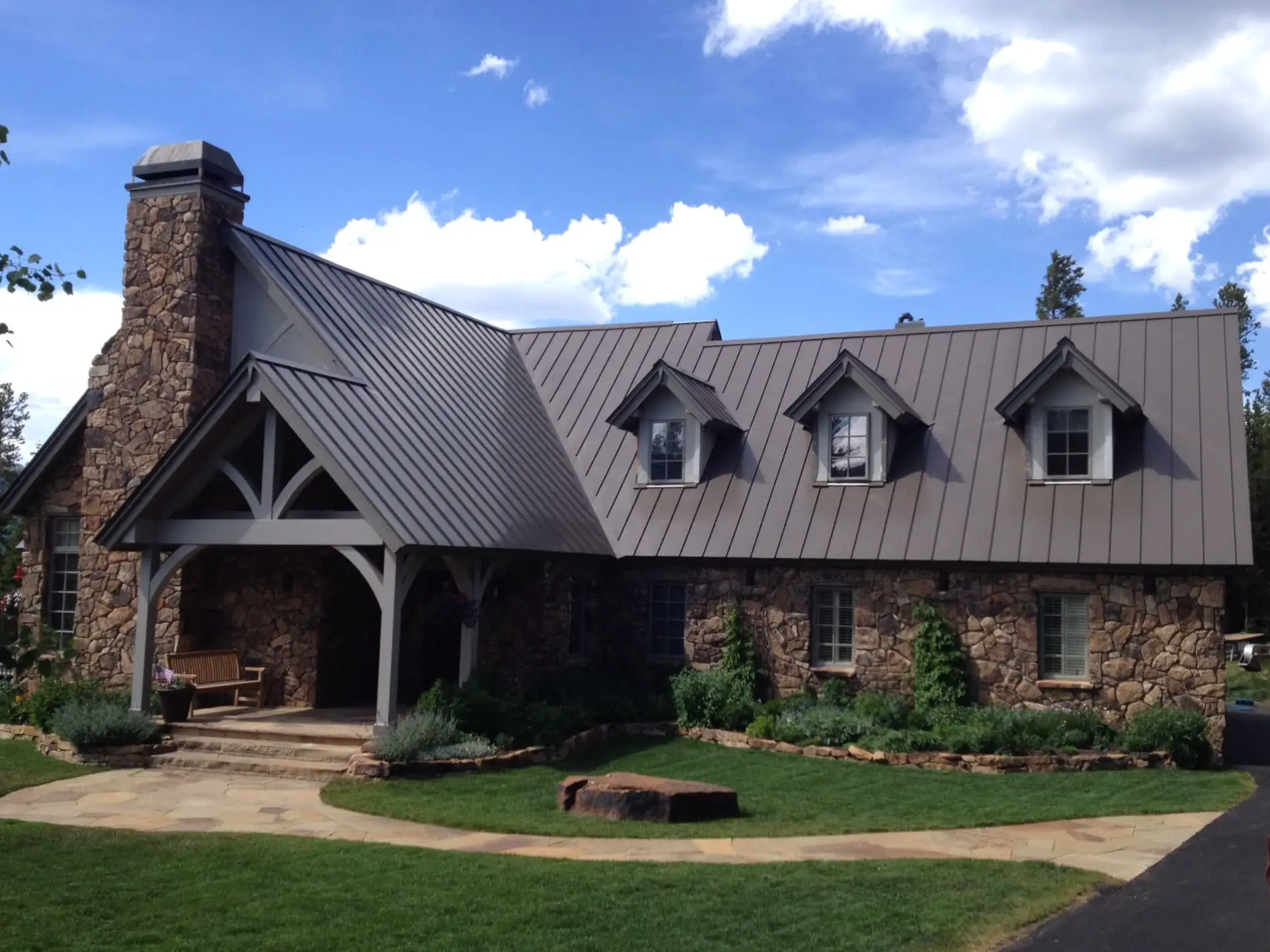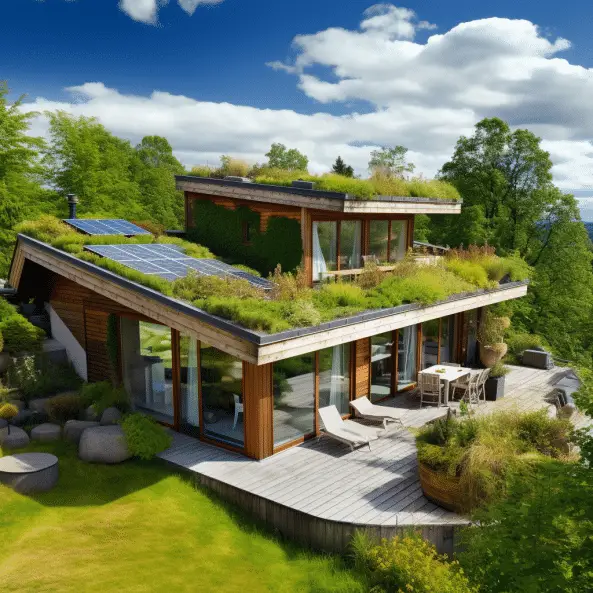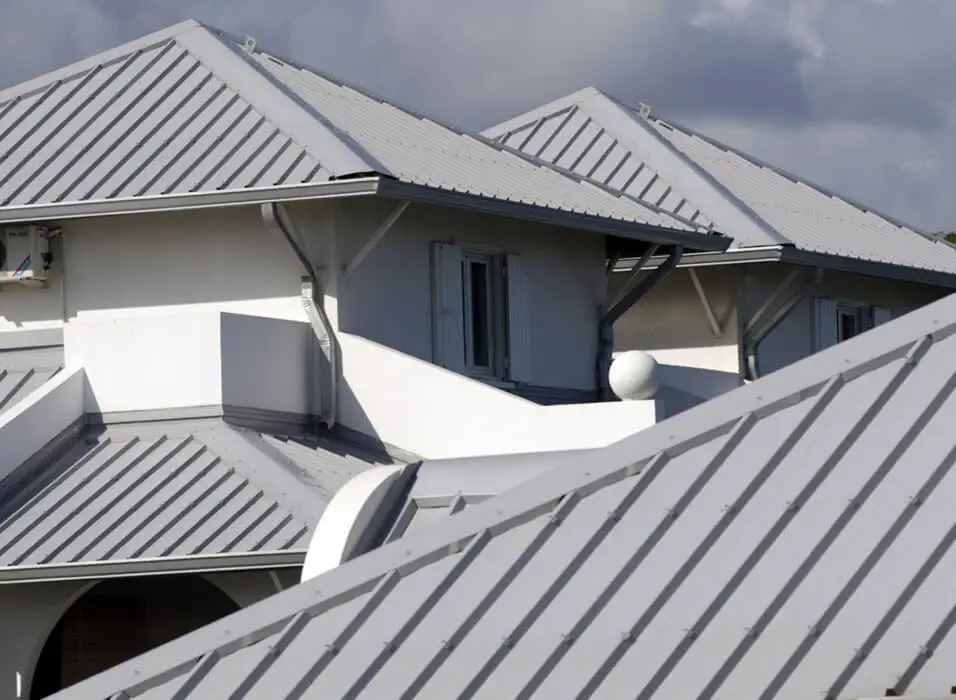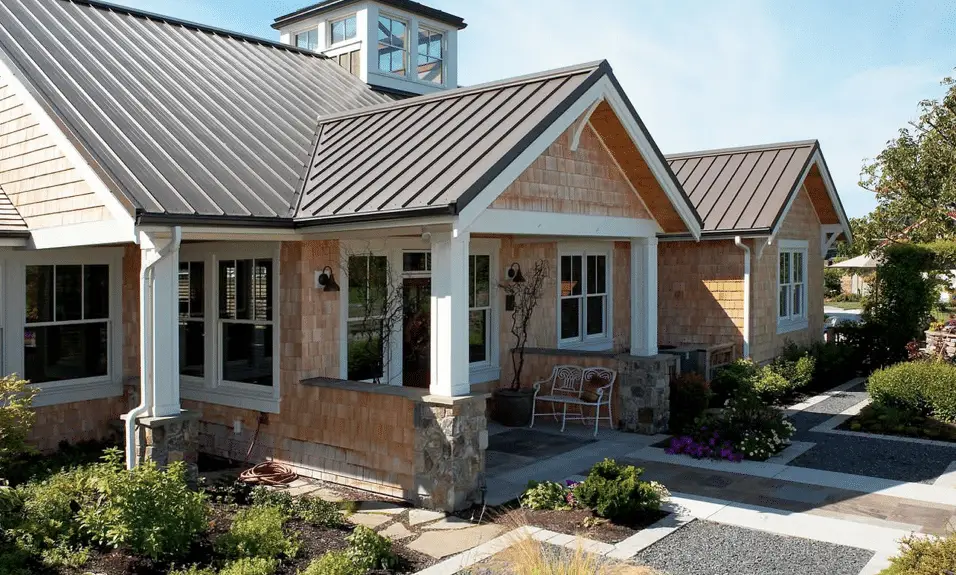Does A Metal Roof Devalue A House
Introduction
Do metal roofs make houses less valuable? People like metal roofs because they last a long time and use less energy. It’s been debated for a long time whether a metal roof lowers the value of a home. This piece talks about things that make metal roofs lose value.
Roofs change how much a house is worth. This keeps the structure dry and makes it look nicer. Asphalt shingles are used by most homes. Metal roofs is back in style thanks to new technology and tastes. Even though metal roofs are good for you, they might lower the value of your house.
Furthermore, the durability and longevity of a metal roof can actually increase a house’s value. Unlike asphalt shingles that may require replacement every 15-20 years, metal roofs can last for 50 years or more with proper maintenance. This longevity not only saves homeowners from the hassle and cost of frequent roof replacements but also adds to the overall appeal for potential buyers. Additionally, metal roofs are highly resistant to fire, pests, and extreme weather conditions, providing an added layer of protection to the house.
While there may be concerns and misconceptions surrounding the impact of a metal roof on a house’s value, it is essential to consider the overall benefits and advantages it offers. The visual appeal, durability, energy efficiency, and longevity of metal roofs can outweigh any perceived devaluation. By understanding the various factors involved and making informed decisions, homeowners can confidently choose a metal roof that not only enhances their property but also maintains or even increases its value.
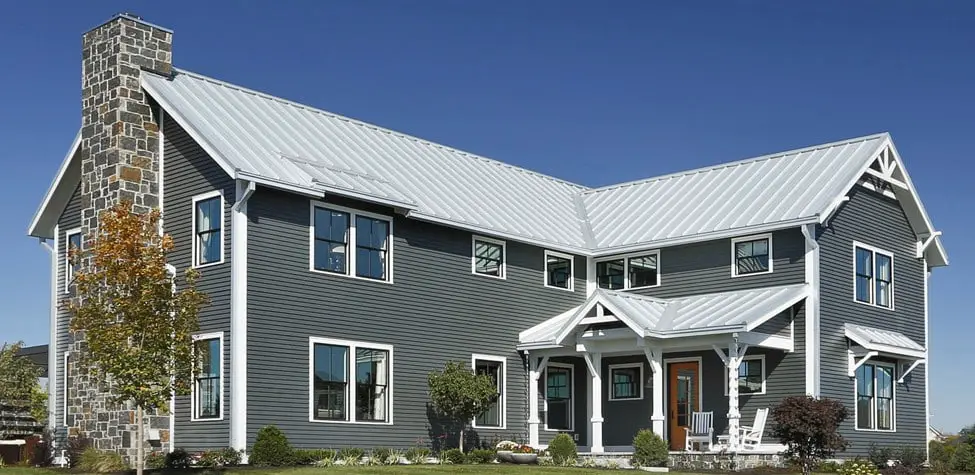
Is it worth it to put on a metal roof?
It’s not clear if you need a metal roof. Planning to sell your home soon? Stay away from metal roofs. Getting a house for a long time saves you money.
When picking a roofing material for your home, there are a few things you should think about. Many people have metal roofs. Metal roofs are worth it for many homes because they have many benefits. We’ll talk about why metal roofs are a great choice for your next roofing job.
Strength and life
Putting on a metal roof is a good idea because they last a long time. Metal roofs can stand up to rain, snow, and wind. Because they don’t catch fire, they are safer for your house. A metal roof saves you money because it doesn’t need as many fixes and replacements.
Using less energy
Another benefit of metal roofs is that it saves energy. There is less heat in the sun when you have a metal roof. By cooling your house, this lowers the need for air conditioning in the summer and your energy costs. Insulating a metal roof in a way that saves energy is possible. A metal roof can help the environment.
Value for Money
Metal roofs are useful, and they also look nice. Depending on their shape, color, and finish, you can make them match the style and architecture of your house. No matter what style you like, a metal roof might make your home look better from the street. Because they are light, metal roofs can be put on a lot of different buildings without affecting their structural stability.
Easy to Care For
Metal roofs are easier to keep up than other types of roofs. They don’t need to be treated or inspected often because mold, mildew, and insects can’t grow on them. Metal roofs don’t leak often and can handle a lot of snow. With a metal roof, you don’t have to worry about home repairs.
You might want to get a metal roof for your house. It’s a good purchase because it lasts a long time, saves energy, looks good, and doesn’t need much upkeep. It costs more to install than other roofing materials, but it’s worth it in the long run. Metal roofs last a long time, take up little space, and look good.
Is it bad to have a metal roof?
Durability. Some metal roofs can withstand 140 mph winds, won’t corrode or split, and may be impact-resistant if placed properly. Metal roofs also require less expensive maintenance than conventional roofing materials.
There are several aspects to consider when choosing a roofing material for your home. Metal roofs have been trendy recently. Many homeowners still wonder if a metal roof is a wise choice. This post will discuss metal roof pros and cons to help you decide.
Advantages of Metal Roofs
Durability is a major benefit of metal roofing. With regular maintenance, metal roofs can endure 50 years or more, unlike asphalt shingles. They are very resistant to hail, heavy rain, and strong winds, making them ideal for homeowners in storm-prone locations.
Another benefit of metal roofing is energy efficiency. Metal reflects sunlight, cooling your home. Hot summers may mean lower cooling expenditures. Some metal roofs have specific coatings that boost energy efficiency, lowering your energy expenses.
Negatives of Metal Roofs
Metal roofs have pros and cons. Initial installation costs are a worry. Metal roofs cost extra upfront. Over time, their energy efficiency and lengthy lifespan might balance this initial expense.
Noise is another drawback of metal roofs. Metal roofs make more noise when rains hit them during heavy rain or hailstorms. Proper insulation and underlayment can reduce home noise.
The pros and cons of a metal roof depend on your needs and tastes. If durability, energy efficiency, and lifespan are important, consider a metal roof. If upfront cost or noise are concerns, consider other roofing solutions. Always seek a skilled roofing contractor for personalized advice.
Are metal roofs noisy when raining?
Short answer: It varies. Simple metal roofs, such open frame barn or warehouse roofs, are substantially louder than asphalt shingles. However, a well fitted modern metal roofing system would make rain noise more like asphalt shingles.
Homeowners often wonder if metal roofs are noisy when it rains. Due to its longevity, energy efficiency, and aesthetic appeal, metal roofs are becoming more popular. The idea that metal roofs make too much noise during rain is longstanding. In actuality, metal roofs make similar rain noise to other roofing materials.
The sound of rainfall hitting metal roofs does not increase, contrary to popular assumption. Metal roofs make similar noises to other roofs. The idea that metal roofs are noisy may come from their hardness, which makes them sound different from asphalt or wood. This variation in sound may not be louder or more annoying.
Rainfall noise depends on several elements, regardless of roofing material. Roof design, insulation, and attic space affect sound transmission. Rain noise can be reduced by attic ventilation and insulation. The sound level within the house can also be affected by trees, surrounding buildings, and roof shape.
Modern metal roofing systems sometimes include underlayment or insulation to reduce noise. The house is quieter because these materials absorb sound waves and prevent them from rebounding.
The idea that metal roofs are noisy when it rains is false. Metal roofs sound different than other roofing materials, but not louder or annoying. Roof design, insulation, and sound-dampening materials help reduce noise. Homeowners can pick metal roofs for their various benefits without worrying about rain noise.
What are the two biggest concerns to a metal roof?
Top 7 Most Common Metal Roof Problems
- Metal Roof Leaking. A leaking roof is the last thing anyone wants.
- Corrosion.
- Chalking & Fading.
- Installation Errors.
- Dissimilar Metals & Materials.
- Scuffing & Scratching.
- Oil Canning.
- Know Manufacturers That Make Quality Metal Products
Metal roofs are popular with homeowners due to its durability, endurance, and aesthetics. Like every roofing material, it has drawbacks that homeowners should be aware of. We will analyze metal roofing’ two greatest issues and offer solutions in this article.
Wet-resistant:
Extreme weather is a major hazard for metal roofing. Leaks and structural damage can result from metal expanding and contracting with temperature. Hailstorms and strong winds can dent and scratch metal roofs.
Choose a high-quality metal roofing material engineered to withstand extreme weather to reduce these issues. Look for metal roofs that have been tested for hail, wind, and harsh temperatures. To guarantee the roof is firmly fastened and weatherproof, qualified specialists must install it.
Noise:
The noise metal roofs make during rain or hailstorms is another worry. Metal roofing materials can be louder than others when raindrops hit, which may irritate some homeowners.
Technology has remedied this issue, though. Many metal roofs have insulation or underlayment to reduce noise. A sturdy roof deck or attic insulation can further reduce sound transmission, making the home quieter.
Maintenance, corrosion:
To avoid corrosion and prolong life, metal roofs need frequent maintenance. Corrosion from weathering can cause leaks and structural damage. Rust stains and discoloration on the roof must be checked regularly.
Anticorrosion paint or coating for metal roofs is advised. This coating protects metal against corrosion by blocking moisture. Regular cleaning and removal of debris like leaves and branches helps protect the roof.
Metal roofs have many benefits, but they can have drawbacks. By choosing a high-quality metal roof, resolving noise concerns, and maintaining it, homeowners may extend the life of their metal roof and reduce potential issues.
Can a person walk on a metal roof?
Walking on a metal roof is a topic that often raises questions and concerns. Many people wonder if it is safe or if it can cause damage to the roof. In this article, we will explore the factors that determine whether a person can walk on a metal roof and provide some guidelines to ensure safety.
Firstly, it is important to consider the type of metal roof. There are different types of metal roofs, such as standing seam, corrugated, and metal shingles. Each type has its own characteristics and load-bearing capacity. Generally, metal roofs are designed to withstand the weight of snow, rain, and other environmental factors. However, walking on a metal roof can still pose risks if not done properly.
Secondly, the condition of the metal roof is crucial. If the roof is old, damaged, or has loose panels, it may not be safe to walk on. Walking on a compromised roof can cause further damage and increase the risk of accidents. It is recommended to inspect the roof before attempting to walk on it and address any issues that may compromise its integrity.
Thirdly, the pitch or slope of the roof plays a significant role in determining whether it is safe to walk on. Steeper roofs are generally more challenging to walk on and require extra caution. It is important to assess the slope of the roof and consider the individual’s ability to maintain balance and stability while walking on it.
Additionally, weather conditions should be taken into account. Walking on a metal roof when it is wet, icy, or covered in snow can be extremely dangerous. These conditions reduce traction and increase the risk of slipping and falling. It is advisable to wait for dry and stable weather conditions before attempting to walk on a metal roof.
How does the presence of a metal roof affect the overall aesthetic appeal of a house?
A metal roof can have a significant impact on the overall aesthetic appeal of a house. With its sleek and modern appearance, a metal roof can add a touch of sophistication and contemporary style to any home. The clean lines and smooth surface of a metal roof can create a visually appealing contrast against traditional building materials, such as brick or wood siding.
Furthermore, the availability of metal roofs in a wide range of colors and finishes allows homeowners to customize their roof to complement the architectural style and color scheme of their house. Whether it’s a bold and vibrant color or a more subtle and neutral tone, a metal roof can enhance the curb appeal and make a statement.
Additionally, the durability and longevity of metal roofs contribute to their aesthetic appeal. Unlike other roofing materials that may deteriorate over time, metal roofs can maintain their pristine appearance for decades. This long-lasting beauty can be particularly attractive to potential buyers, as it eliminates the need for frequent roof replacements and repairs.
Are there any specific regions or markets where a metal roof is considered less desirable, leading to potential devaluation?
In certain regions or markets, the presence of a metal roof may be considered less desirable, potentially leading to a devaluation of the house. One factor that can contribute to this perception is the climate of the area. In regions with extreme temperatures, such as areas with hot summers or cold winters, metal roofs may be seen as less favorable due to their potential to amplify heat or cold. Homebuyers in these regions may prefer roofs that provide better insulation and energy efficiency.
Additionally, cultural preferences and architectural styles can influence the desirability of metal roofs in specific markets. In regions where traditional or historical aesthetics are highly valued, metal roofs may be seen as incompatible with the overall architectural character. Homebuyers in these markets may prioritize roofs made from materials that align with the local architectural style, such as clay tiles or slate.
It is important to note that the perception of metal roofs can vary greatly depending on the specific region and market. While some areas may consider metal roofs less desirable, there are also regions where they are highly sought after for their durability, longevity, and modern aesthetic. Ultimately, the impact on potential devaluation will depend on the preferences and priorities of homebuyers in a particular market.
What are the long-term maintenance and repair costs associated with a metal roof, and how do they impact the house’s value?
When considering the long-term maintenance and repair costs associated with a metal roof, it is important to note that while metal roofs are generally durable and long-lasting, they are not completely maintenance-free. Regular maintenance and occasional repairs are necessary to ensure the roof’s longevity and to prevent any potential issues that may arise.
Maintenance costs: Metal roofs typically require less maintenance compared to other roofing materials such as asphalt shingles. However, it is still recommended to inspect the roof periodically for any signs of damage or wear. This may involve cleaning the roof surface, removing debris, and checking for loose or damaged panels. Additionally, it is important to keep the gutters clean and free from debris to prevent water buildup and potential damage to the roof.
Repair costs: While metal roofs are known for their durability, they can still be susceptible to certain issues over time. Factors such as extreme weather conditions, improper installation, or accidental damage can lead to the need for repairs. The cost of repairs will depend on the extent of the damage and the specific materials used in the roof. It is advisable to address any repairs promptly to prevent further damage and potential leaks.
The impact of maintenance and repair costs on the house’s value can vary depending on various factors. A well-maintained metal roof can enhance the overall value of a house, as it provides potential buyers with the assurance of a durable and long-lasting roofing system. On the other hand, neglecting maintenance or delaying necessary repairs can lead to more significant issues and potential devaluation of the property. Therefore, it is crucial for homeowners to prioritize regular maintenance and address any repair needs promptly to preserve the value of their house with a metal roof.
What are the long-term maintenance and repair costs associated with a metal roof, and how do they impact the house’s value?
When considering the long-term maintenance and repair costs associated with a metal roof, it is important to note that metal roofs are generally known for their durability and longevity. Unlike traditional roofing materials such as asphalt shingles, metal roofs are designed to withstand harsh weather conditions and can last up to 50 years or more with proper care. This longevity can significantly reduce the need for frequent repairs or replacements, ultimately saving homeowners money in the long run.
However, it is essential to acknowledge that like any other roofing material, metal roofs may require occasional maintenance and repairs over time. These costs can vary depending on factors such as the type of metal used, the complexity of the roof design, and the extent of any damage or wear. Regular maintenance tasks for a metal roof may include cleaning debris, inspecting for loose or damaged panels, and ensuring proper sealing and flashing.
While the maintenance and repair costs associated with a metal roof can impact the house’s value, it is crucial to consider the overall benefits that a metal roof provides. The durability and longevity of metal roofs can be attractive to potential buyers, as they offer peace of mind and reduced future expenses. Additionally, metal roofs are often more energy-efficient, which can lead to lower utility bills and further enhance the value of the house. Therefore, while there may be some maintenance and repair costs involved, the long-term advantages of a metal roof can outweigh any potential impact on the house’s value.
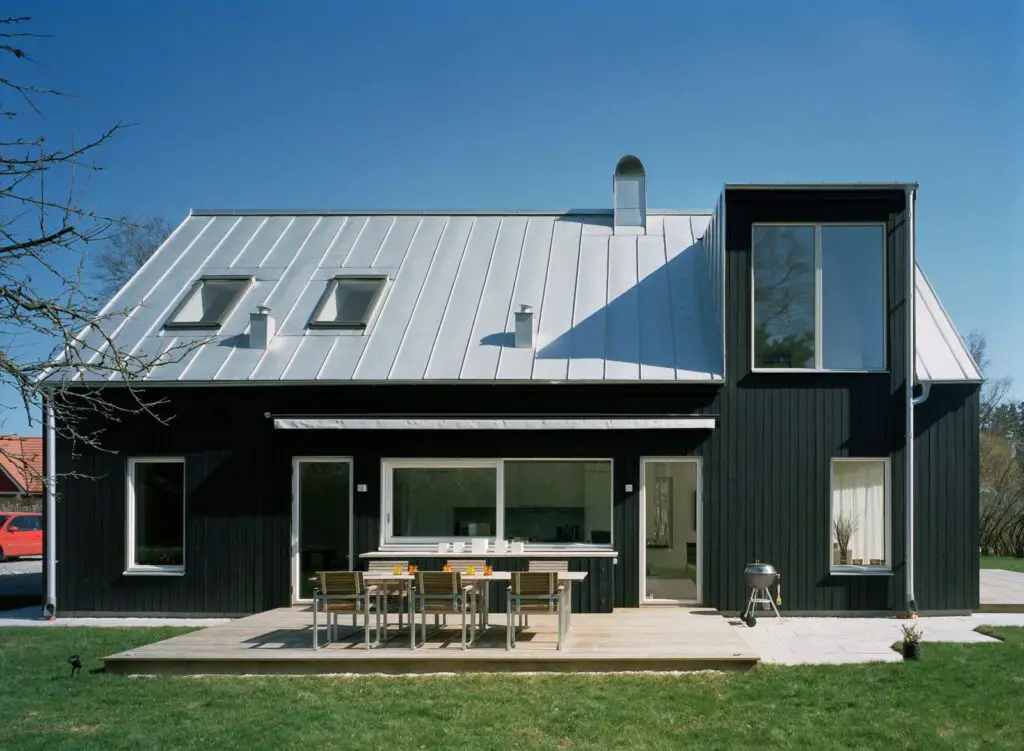
Conclusion
A metal roof can have both positive and negative effects on the value of a house. Ultimately, whether or not a metal roof devalues a house depends on various factors such as the location, market trends, and the preferences of potential buyers. However, it is important to note that in many cases, a metal roof can actually increase the value of a house due to its numerous benefits.
One of the main advantages of a metal roof is its durability and longevity. Unlike traditional asphalt shingles, metal roofs can last for 50 years or more with proper maintenance. This long lifespan can be highly appealing to potential buyers, as it eliminates the need for frequent roof replacements and repairs. Additionally, metal roofs are highly resistant to extreme weather conditions such as hail, wind, and fire, providing homeowners with added peace of mind. These factors can contribute to an increase home value, as buyers are often willing to pay a premium for a home with a durable and low-maintenance roof.
However, it is important to consider the potential drawbacks of a metal roof as well. Some buyers may have aesthetic preferences that do not align with the appearance of a metal roof. In certain neighborhoods or architectural styles, a metal roof may be seen as out of place or less desirable. Additionally, the initial cost of installing a metal roof can be higher compared to traditional roofing materials, which may deter some buyers who are looking for more affordable options.



